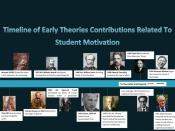Abstract
Arthur Schawlow, winner of the Nobel Prize in physics in 1981, was once asked what, in his opinion, made the difference between highly creative and less creative scientists. He replied, "The labor of love aspect is important. The most successful scientists often are not the most talented. But they are the ones who are impelled by curiosity. They've got to know what the answer is." Schawlow's insights about scientific creativity highlight the importance of intrinsic motivation, which refers to the motivation to work on something because it is interesting, involving, exciting, satisfying, or personally challenging (Amabile, 1997).
There is abundant evidence that people will be most creative and innovative when they are primarily intrinsically motivated, rather than extrinsically motivated by dictates from superiors, or the promise of rewards (Amabile, 1997). We aim to develop an understand-ing of why this is and how it can be applied to modern organizations.
We will use previ-ously established theories as an apparatus to discern the existence of intrinsic motivation in three of today's global technology companies, and then focus on how to cultivate and design a creative environment through the use of intrinsic motivation.
Introduction
The challenges that confront organizations entering the third millennium are complex, diverse and compelling. Businesses have been forced to make dynamic adjustments that have been transformative in impact and international in scope and the traditional methods of identifying, planning for and overcoming future obstacles have become more and more difficult. With these changes occurring, future prosperity of companies will depend in-creasingly upon their ability to innovate and their aptitude for creativity.
Since the 1990s, and into the 21st century, innovation and creativity have become recog-nized as primary means of achieving both social and economic goals. With today's busi-nesses emerging into a rapidly evolving global environment, a company's capacity...


